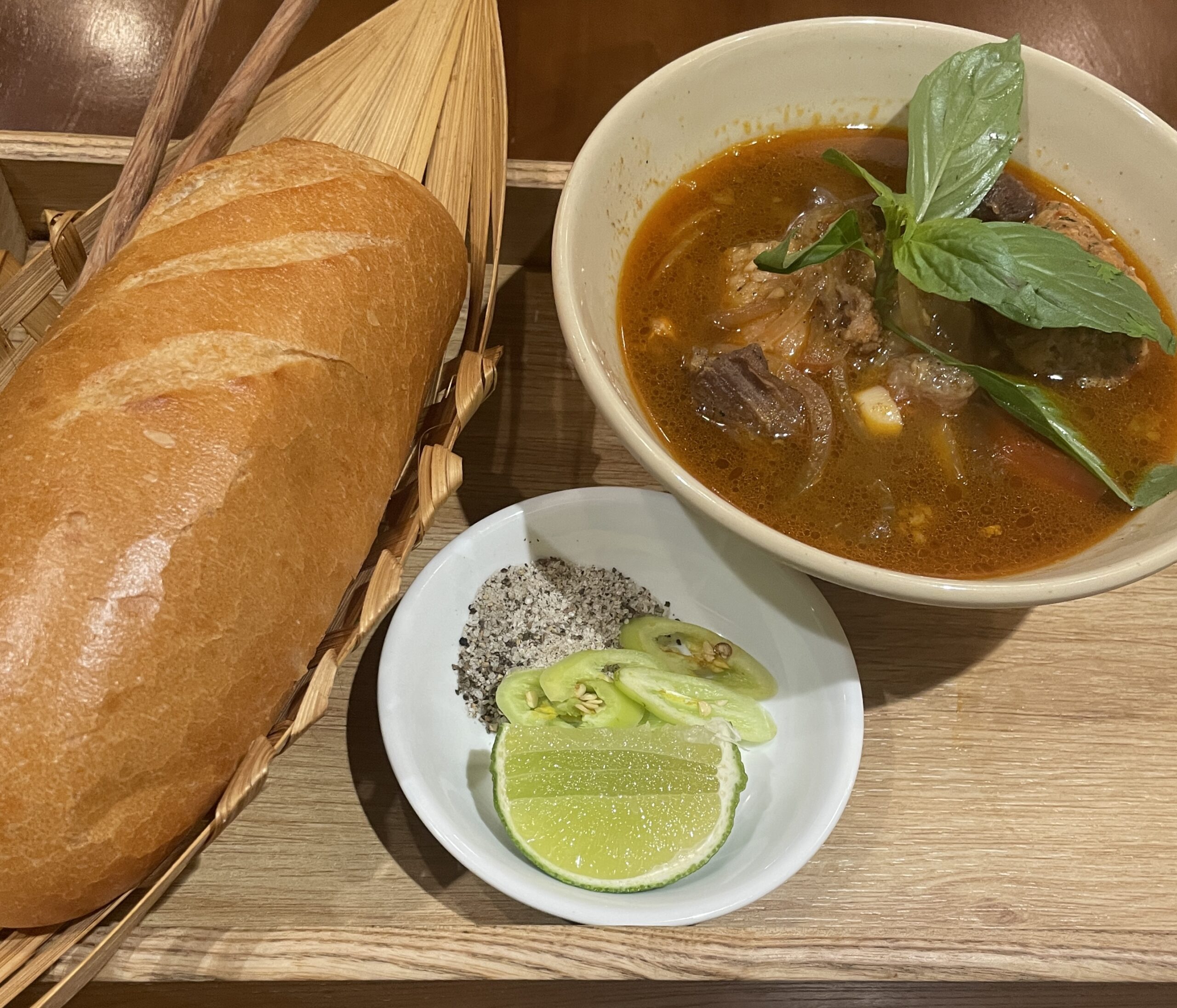Bo Kho: The Most Underrated Vietnamese Dish
Bo Kho might just be the most underrated Vietnamese dish you’ve never heard of, and that needs to change.
This aromatic, slow-cooked beef stew is rich in flavor, bursting with fragrant spices, fresh herbs, and that irresistible lime-salt-pepper dipping mix that takes it over the top.
Earlier this year, I spent three months traveling through Vietnam, eating my way from north to south. I happily devoured the classics, Pho, Banh Mi, Banh Xeo, but also stumbled upon lesser-known gems like Bo Kho that completely stole the show.
Before my trip, I had eaten plenty of Vietnamese food abroad, but I never once saw Bo Kho on a menu outside of Vietnam.
After trying it multiple times during my travels, I couldn’t believe it wasn’t a global star already. This dish deserves the same fame as Pho, and I’m here to tell you why.
What is Bo Kho?
So, Bo Kho is a traditional Vietnamese beef stew known for its aromatic and rich flavors. If you’re thinking of Pho, hold on, it’s nothing like that!
When you dig into Bo Kho, you’ll immediately taste a delightful mix of spices, including star anise, a pinch of cinnamon, and lemongrass, along with generous chunks of tender beef and slow-cooked carrots.
The broth is savory with a touch of sweetness, and the tomato paste and coconut juice add hints of tanginess. The dish is served with a piece of Vietnamese baguette called Banh on the side.
This rich beef stew is garnished with Thai basil, white and green onions, and sometimes cilantro on top.
Bo Kho is especially popular in Southern Vietnam. If you’re visiting central Vietnam, like Hoi An or Da Nang, or even the north in Hanoi, you might find it, but it’s not as commonly eaten there as in the south.
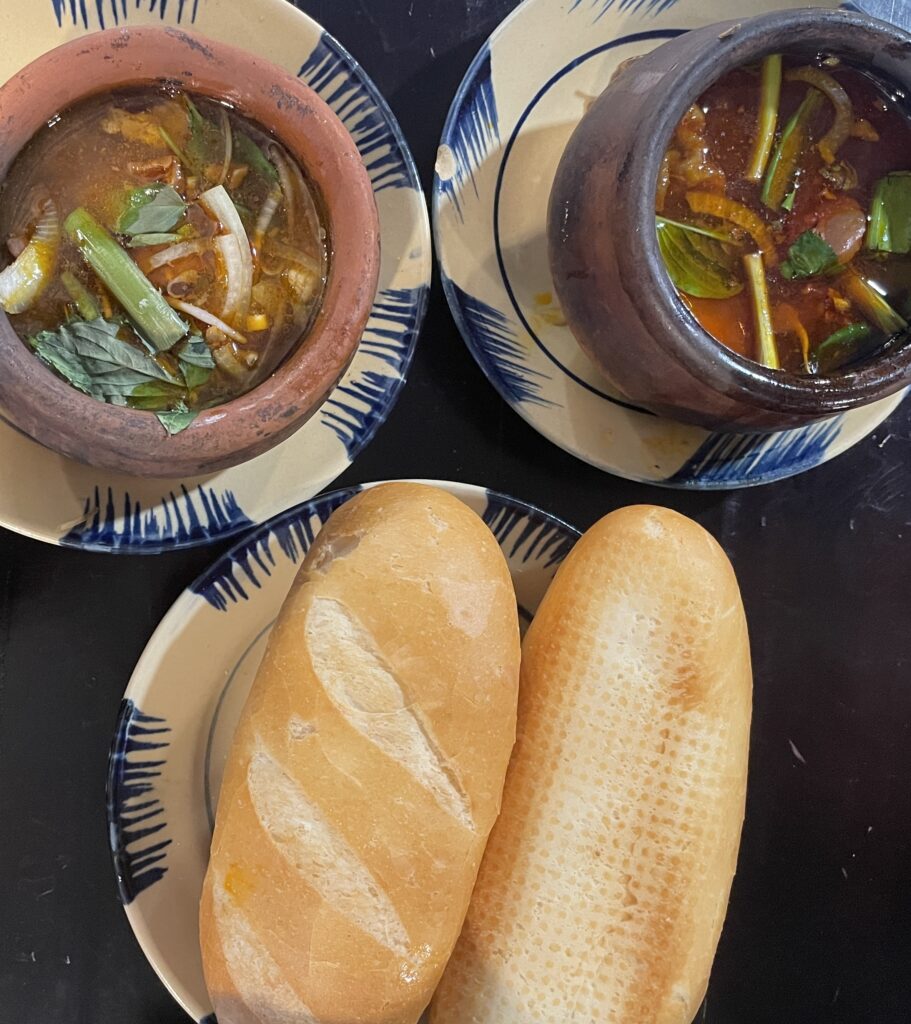
How Bo Kho is Eaten
Like any stew, Bo Kho can be enjoyed on its own, but there are a few versatile ways to eat it.
The most popular method is to tear off pieces of the bread served with the stew and dip them right into it as you also enjoy it with your spoon.
Before you dig in, you should know about the lime and black pepper salt paste that comes as a condiment, it pairs perfectly with Bo Kho! For me, this simple yet unique condiment really made the dish.
The first time I had Bo Kho, a young lady looked at me as I was confused by the side plate served. She came over, made the lime and black pepper salt paste for me, and taught me how to properly eat Bo Kho!
She then suggested taking a piece of bread, adding a chunk of beef and a Thai basil leaf to create a mini sandwich, and dabbing the mini sandwich on the lime and black pepper salt paste. I was blown away by how good this was!
When you’re served Bo Kho with a lime wedge and a small plate of black pepper and salt, you squeeze the lime into the black pepper and salt, mixing it with your chopsticks to create a paste. Sure, you can try the stew on its own, but make and utilize this paste!
Just a tip: don’t add too much lime so that it stays somewhat thick. You’ll use this paste as a dip, gently dab your bread into it, or use it with chunks of beef or your chopsticks for a quick palate cleanser!
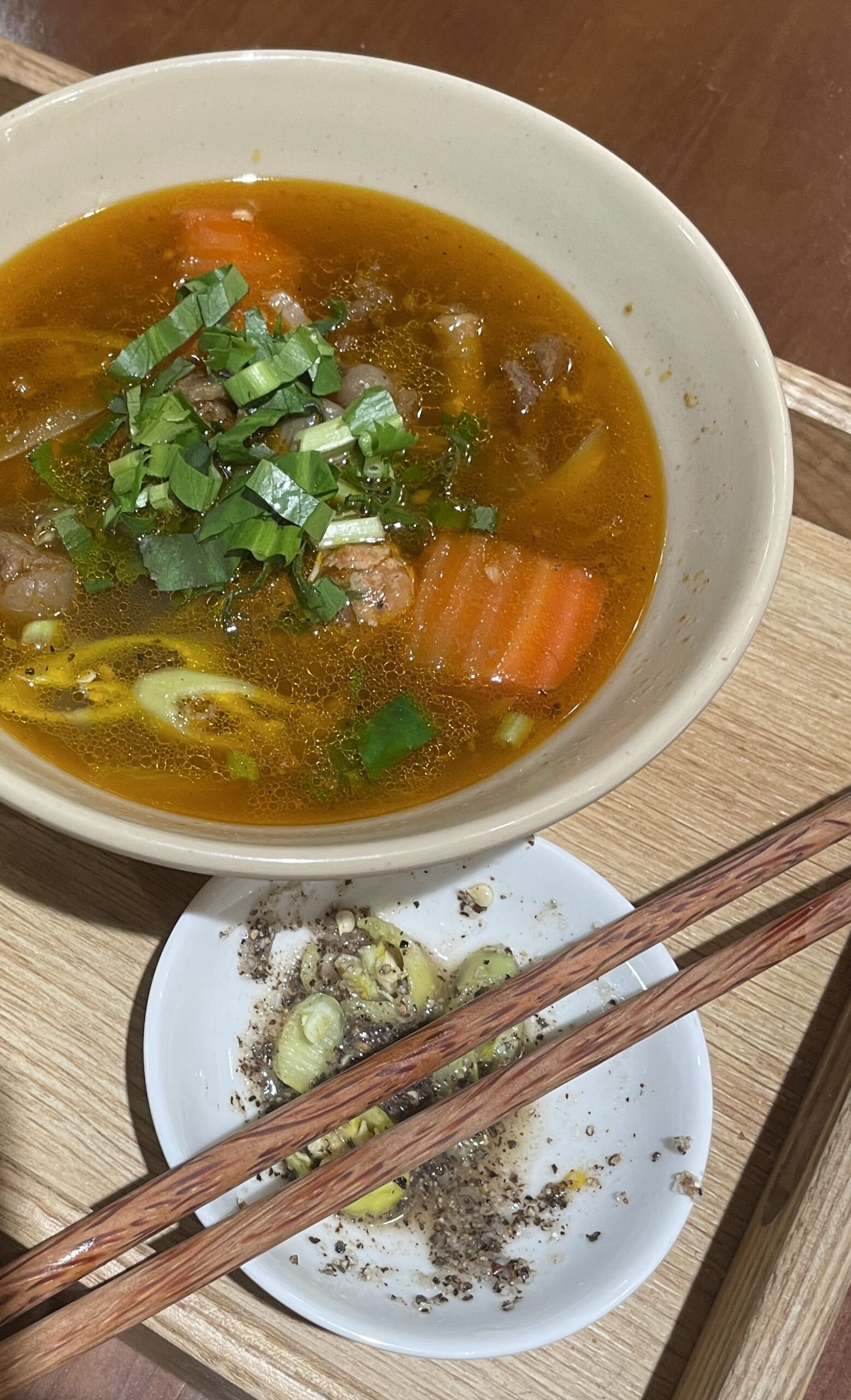
Bo Kho Condiments
The herbs and onions mentioned below are already incorporated into the dish, adding depth to its flavor.
However, they are sometimes served as a condiment on the side, allowing you to add even more freshness and taste to your meal. And other condiments include the following:
- Salt, Pepper, and Lime Wedge
- Cilantro, Thai basil
- Raw sliced white onions,
- Chilli Peppers
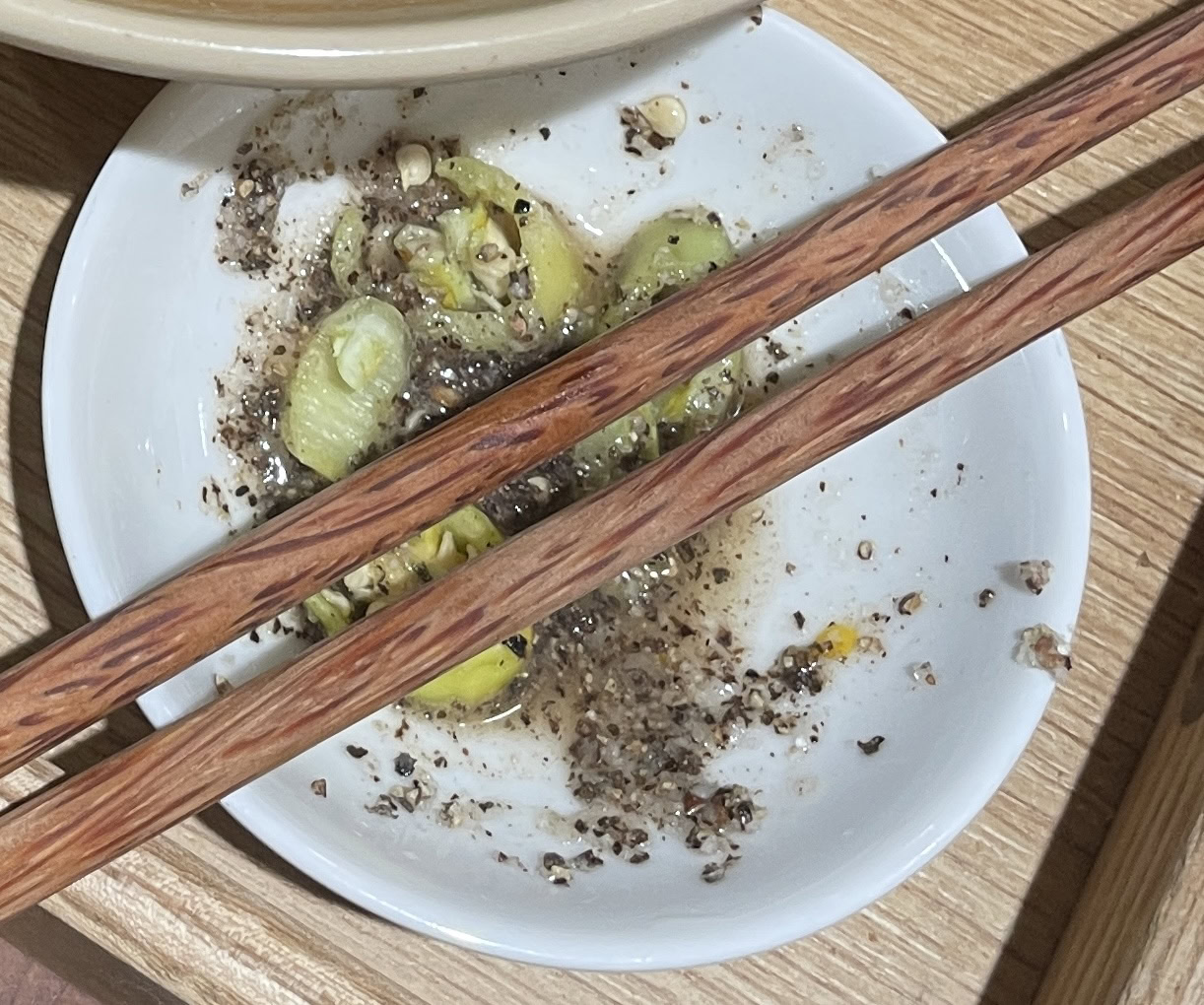
Where to Eat Bo Kho
Now that I’ve covered everything you need to know about Bo Kho, let’s discuss where to find the best one in Ho Chi Minh City.
Even though Bo Kho is primarily enjoyed in the south, it’s still relatively uncommon to find it in Ho Chi Minh City compared to the national dish of Vietnam, Pho.
If you’re eager to try Bo Kho, you’ll need to actively seek it out, as you’re unlikely to stumble upon a restaurant serving this dish while wandering around the city.
After trying Bo Kho, I recommend you give Bo Ne a try as well, my favourite Vietnamese breakfast!
Bò Kho Gánh Sài Gòn
This restaurant serves the best Bo Kho in the city, no doubt about it. But don’t just take my word for it, several locals I spoke to mentioned the same thing. The restaurant has been open for many years and specializes in Bo Kho.
As soon as you arrive, you’re greeted by the mouthwatering scent of beef stew and the sight of locals dining outside the open-air restaurant.
The Bo Kho is served in a classic clay pot, which helps keep the dish warm and enhances its aromas. If you prefer, you can request a bowl instead.
After trying a few different Bo Kho spots around the city, this establishment stood out to me for its quality, flavor, history, and presentation. Each table is filled with condiments for guests to help themselves to.
Bò Kho Cô Mai Since 1984
Another longtime staple in the city, this restaurant has been serving customers since 1984, as its name suggests. It’s easy to see why the Bo Kho here is full and rich in flavor, with soft, tender beef and perfectly cooked noodles.
I did find their Bo Kho to be slightly sweeter compared to the first place I tried, and I generally prefer less sweet foods.
That said, it’s clear why this restaurant has been around for so many years, and I highly recommend you give it a try!
BÒ KHO ÔNG BÀ GIÀ
Tucked away in an alleyway is a charming local bistro specializing in Bo Kho. Upon my arrival, I discovered that this small restaurant also functions as a hostel, and after chatting with the owners, they shared that they had just opened last week!
I ordered the Bo Kho and also tried a banh mi with fried beef wrapped in betel leaf, known as bo la lot in Vietnamese.
Both dishes were delicious; the Bo Kho had a hearty feel with a slight tangy taste, and the chef served a small side of mild sauce that she suggested I could add if I liked.
Since the restaurant is hidden, don’t hesitate to follow your map directions through the alleyway when you arrive!
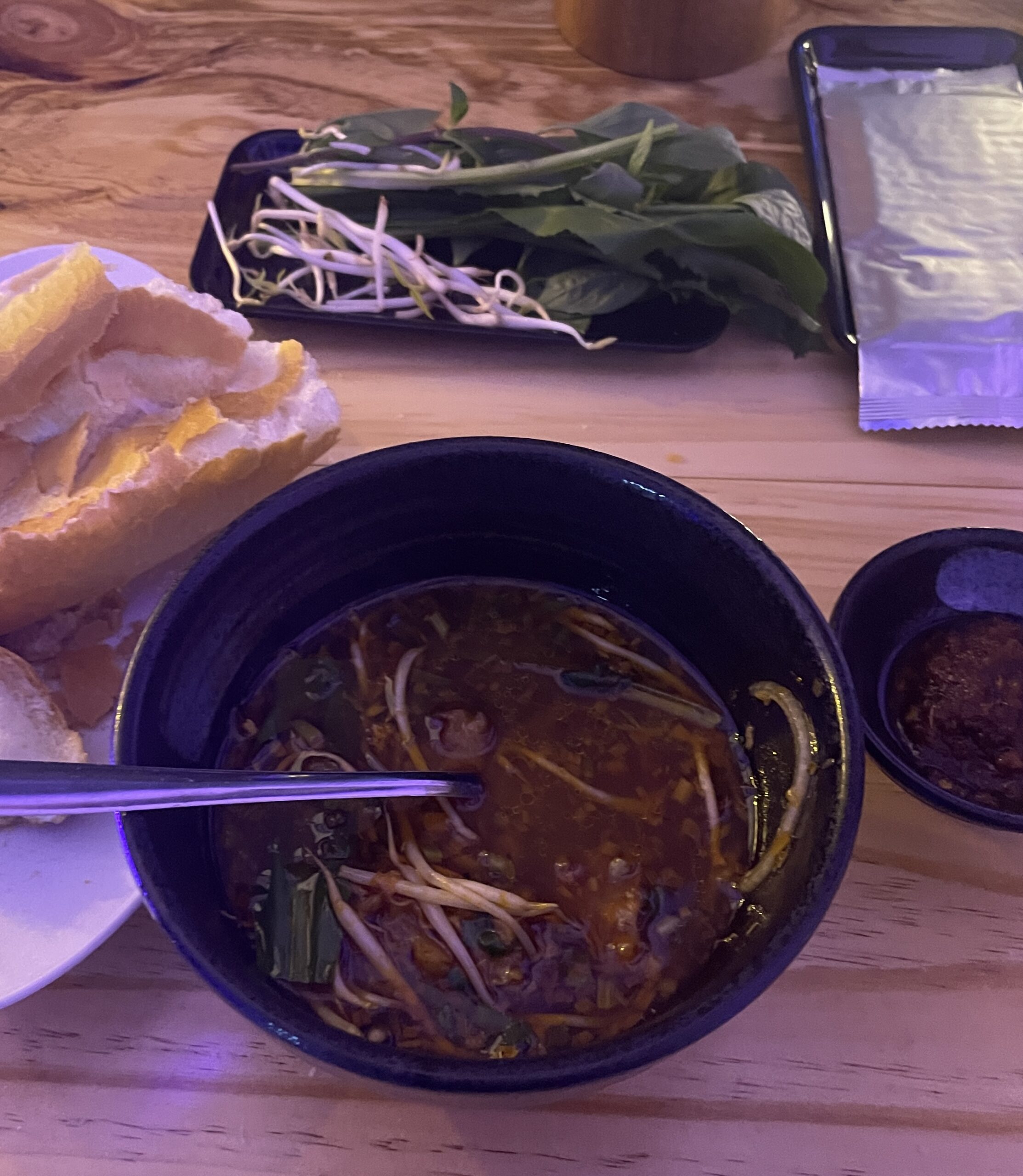
What is Bo Kho in Vietnamese cuisine?
Bo Kho is a traditional Vietnamese beef stew made with tender slow-cooked beef, carrots, aromatic spices, and herbs. It’s often served with crusty bread, rice noodles, or steamed rice.
Is Bo Kho the same as Pho?
No, Bo Kho and Pho are different dishes. Pho is a clear noodle soup, while Bo Kho is a thicker, spiced beef stew with a richer flavor profile.
How do you eat Bo Kho?
Bo Kho is typically enjoyed by dipping crusty bread into the stew or serving it over noodles or rice. Adding fresh herbs, lime juice, and chili enhances the flavor.
Where can you find Bo Kho in Vietnam?
You can find Bo Kho in many local eateries, street food stalls, and casual restaurants across Vietnam, especially in the south around Ho Chi Minh City.

